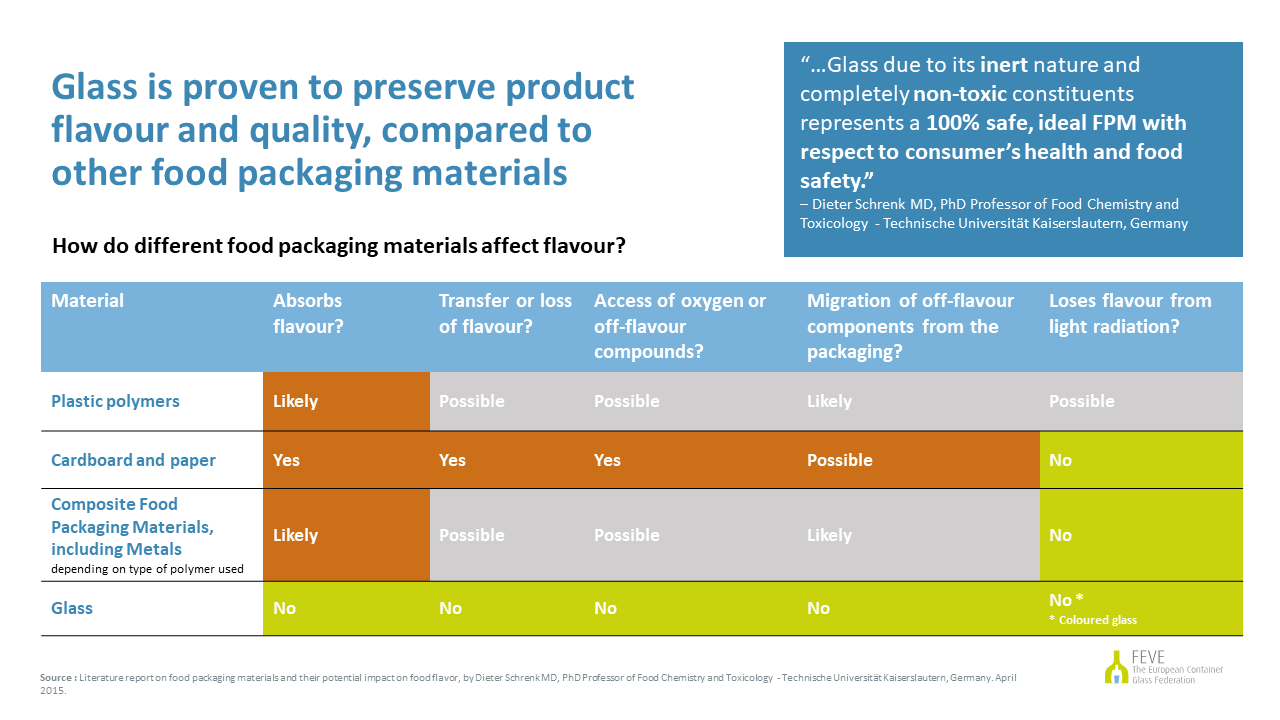Glass is virtually inert and impermeable
The protective properties of glass act as a safe barrier against external agents, preventing them from coming into contact with the products inside. This inertness makes glass a reliable option for preserving the flavour of products for longer, even once opened.
Glass is tasteless and odourless
Unlike other packaging materials, glass doesn’t interact with the food inside, keeping it in its original state.
As a tasteless and odourless material, glass is the packaging of choice for preserving the taste, freshness and nutritional value of food and beverages.
Glass doesn’t deteriorate, corrode, stain or fade
The simple alchemy of sand, soda ash and limestone results in single-layered, non-porous material that doesn’t absorb any food, liquids or gasses.
It also doesn’t deteriorate, corrode or fade, making it safe to store both hot and cold beverages.
Glass preserves products’ nutrients and vitamins
Glass packaging is confirmed to protect the contents’ taste, freshness, nutrients and vitamins by acting as a natural barrier to potentially harmful substances.
Product quality suffers when vitamins, minerals, flavour, aroma, and even bubbles in carbonated drinks, escape from packaging. That’s why glass is used in a wide variety of products, from food to beverages and pharmaceuticals.

